Tiberio 2010 Pecorino Colline Pescaresi Abruzzo 94
by Ian D’Agata
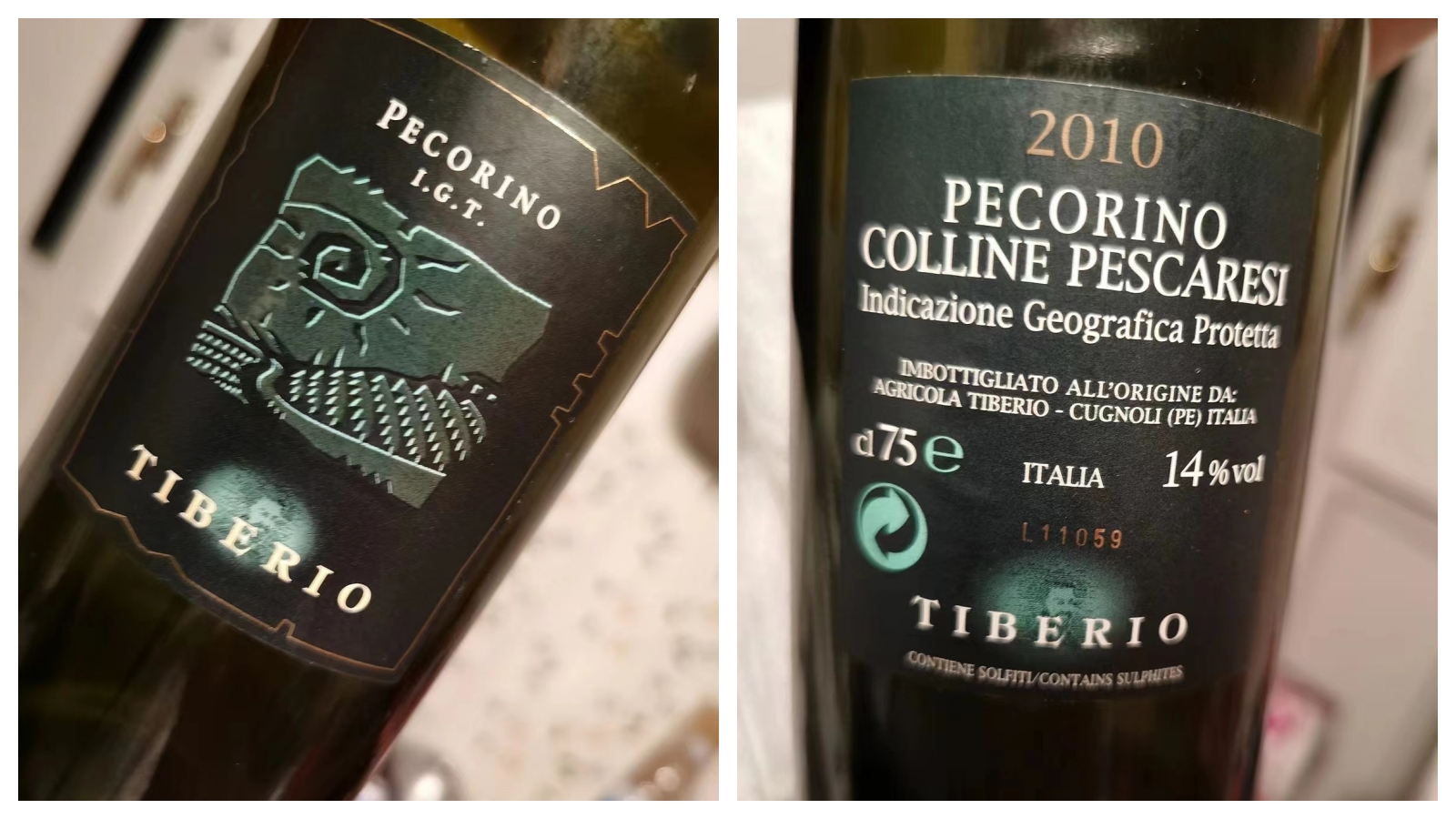
From one of the two or three recognized masters of this grape variety, a knockout, very hard-to-find old Pecorino wine. Golden-tinged yellow-green colour. Enticing, complex nose offers peach, Kaiser pear, white flowers, crushed stone, citrus peel, gingery spices and a chamomile nuance; picks up hints of tropical fruit with aeration. Forward, broad, and impeccably pure, displaying outstanding breadth to its orchard fruit and herbal flavours; this is ripe and lemony at the same time. Still bright and vigorous at fourteen years of age, this saturates the entire mouth with tactile extract and nuances of balsamic oils and grilled herbs (rosemary, sage). Manages the neat trick of being rich and thick but without leaving an impression of undue weight. I remember tasting this wine directly at the winery the year it was first released, and I’d say it has delivered on its early promise, and then some. Well done! Drinking window: 2024-2028.
Paul Blanck 1993 Pinot Noir “F” Alsace 93
by Robert Millman
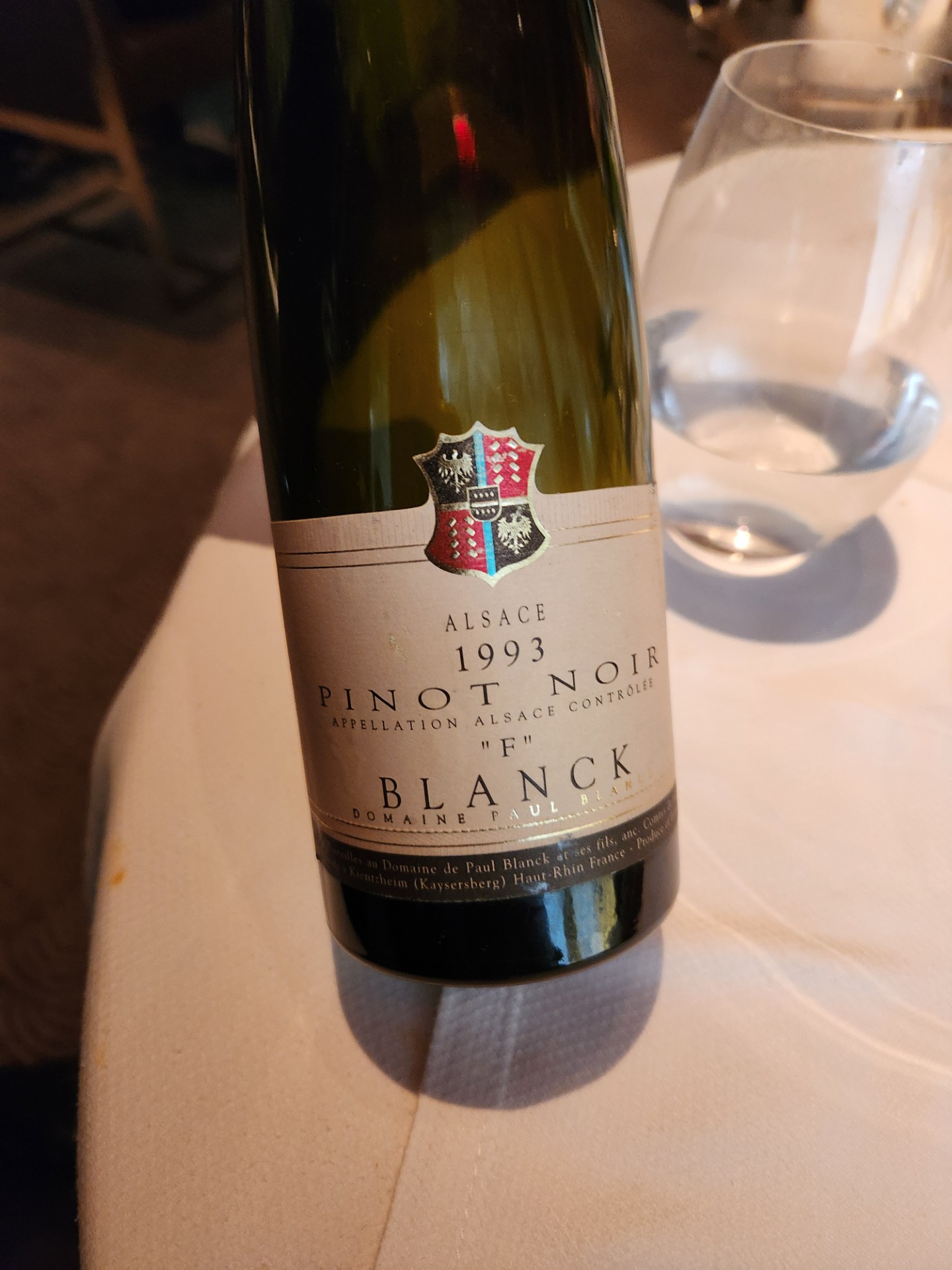
A good number of Alsace producers were in New York recently for a tasting of wines made from all the major Alsatian varieties. The event was marketed under the title “Alsace Rocks” which is cringe worthy to my mind. Public Relations and marketing may or may not be necessary evils in the wine business. Alas it is the case that sales of Alsatian wines—with the exception of the wines from Trimbach—have fallen in the past decade. There are any number of factors: the increasing role of dry Rieslings from Germany, the rise of dry Chenin Blancs from the Loire Valley, the restaurant worthiness of Grüner Veltliners, many more affordable Chardonnay based wines from the Macon. Perhaps the problem can be traced back to what is in fact an inherent strength to Alsatian wines—the proliferation of varieties beyond Riesling: Gewurztraminer, Muscadet, Pinot Gris, Pinot Blanc, Sylvaner, Pinot Noir. A wine lover could practically live on Alsatian wines alone with a bit of Chardonnay and Cabernet Sauvignon thrown in for variation! TerroirSense Wine Review Editor-in-Chief Ian D’Agata has written about this at length (and he makes the point that while many of Alsace’s wines rank with the best in the world, and actually have no peers -think of the region’s amazing Gewurztraminers- far too much Alsace wine isn’t good enough but is allowed to be labeled even with a grand cru’s name, for example). For most wine drinkers, Alsace means great Riesling. Those are in competition with Rieslings from Germany and Austria. Of course, a side-by-side comparison between top- examples from each region reveals wonderful differences in style, aroma, above all palate texture. Why not some of each?
One grape that has started to excel in Alsace is Pinot Noir which has benefited greatly from global warming. The top Pinots from Domaine Albert Mann are now priced at the level of many village Burgundies. My own tasting confirmed this most welcome development. Many Alsatian Pinot Noirs are not so much an alternative to red Burgundies but a worthy category unto themselves. This was brought home to me when I tasted the Domaine Paul Blanck 1993 Pinot Noir “F” at the above-mentioned Alsatian event. Firstly, why the F in quotations (and “H” for the best Albert Mann Pinot Noir)? Alsatian rules do not permit the use of the full name of a Grand Cru site for anything other than the white varietals. The growers, being clever, use the first name of the vineyard and place it in quotation marks. “F” stands for Furstentum, a wonderful grand cru that makes superb Gewurztraminers and Pinot Gris (and pretty good Rieslings!). And, not surprisingly, some first-class Pinot Noir wines.
But how would a 21 years old Alsatian Pinot show at this point? The answer came from the glass that Philippe poured for me. I am pleased to report very well indeed. Philippe smiled because he already knew that this was a fine Pinot from what turned out to be a very good if not the best vintage in Alsace for its Pinot-based wines: Heavy rains hit in late September causing some dilution after what was an excellent season. The wine’s color showed a bit of aging on the edge but was otherwise of medium density with the purple giving way to garnet. (Color is rarely a good indicator of what to expect from a Pinot Noir.) On the palate the wine was fluid, and expressive with a lovely herbal/woodsy note, really excellent fresh acidity and smooth tannins. Like a fine Riesling, the wine was nuanced and engaging yet graceful in its finish. The 1993 tasted ten years younger than it was. I wonder how many Red Burgundies from 1993 would be as well balanced and satisfying? The pedigree of the source, a Grand Cru vineyard (along with gentle extraction, I may add) was evident in every sip. The wine was a surprise yet not a surprise. Greatness in Alsatian wine is now present in its Pinot Noirs. Drinking Window: 2024-2029.

 中文
中文
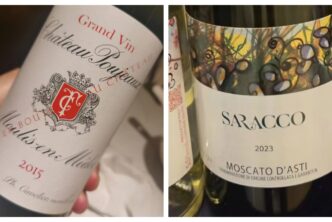
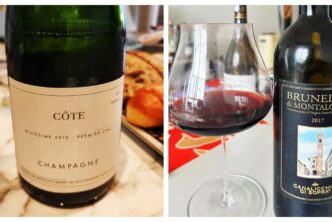
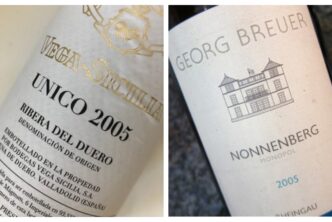

Good work
thanks!
Ian–I found the 2021 d’Yquem to be rather lighter in style than older vintages. Is this a long term trend? ( I happen top love the heavy stuff)
Ciao there,
as I have written many times before and in this recent piece too, the encroachment of Sauvignon Blanc in Sauternes vineyards and wines to be a big mistake. Relative to this 2021, I also think that 30% Sauvignon Blanc (and it’s important to state “Blanc”, because Sauvignon Gris is another matter and another conversation) in the blend is just a little too much: or to put it more precisely, you accept what it is you inevitably lose by adding so much Sauvignon Blanc because you make sure to get something in return (essentially, lightness, freshness, drinkability when young) . BUT it is the Semillon that makes the difference and makes the wines of Sauternes unique: rich, dense, textured, layered and unlike any other wine on Earth. It is my strong view that Sauvignon Blanc should never amount to more than 20% of the blend;: depending on the vintage, maybe, at most, 25%.
That said, I think the 2021 Yquem has sneaky concentration, and is a remarkable wine in that I find the Sauvignon Blanc has been dosed with a pharmacist’s precision and/or deft touch, adding, in this vintage at least, a penetrating and lifting note that makes what is a fairly rich wine a lot more elegant than it might otherwise have been. Would the 2021 Yquem have been a buit chunky with less Sauvignon Blanc? That I don’t know, I wasn’t there to taste the individual vats and blend trials. But 2021’s elegance is indisputable, and without, methinks, losing sooooo much of Yquem’s usual richness in the process. In part of course, it does lose it: and it couldn’t be otherwiese, with all that Sauvignon Blanc in the mix. I can see how you and undoubtedly many others might find the 2021 has been truned into too light-bodied a wine: in this specific case, I think the addition of Sauvignon has been calibrated well enough that the “damage” that variety does to the wine is offset by its (really only) contribution. This is why, for example, I find the 2021 Yquem a much more refined wine than the 2005, a vintage of Yquem to which the 2021 is often compared to. But to my mind and taste, the 2005 is just too big a wine: or to be nice, it’s more of a case of the 2005 being richer and less elegant while the 2021 is more elegant and less rich. Like you, I normally prefer richer Yquems too: but in this example, I think the 2021 has better balance than the 2005, which seems just too big to me. But I’m really quibbling here and being inordinately geeky: we should all be so lucky to be able to taste and drink these wines on a daily basis! Both are in fact very fine wines, so which of the two vintages one prefers is likely more a case of different strokes for different folks.
That said, I repeat that I agree, I prefer the luscious Yquems and Sauternes too (in general), to Sauternes that have been too stripped down of that characteristic because of an exaggerated addition of Sauvignon Blanc, which besides extra freshness, brings very little to the mix. .